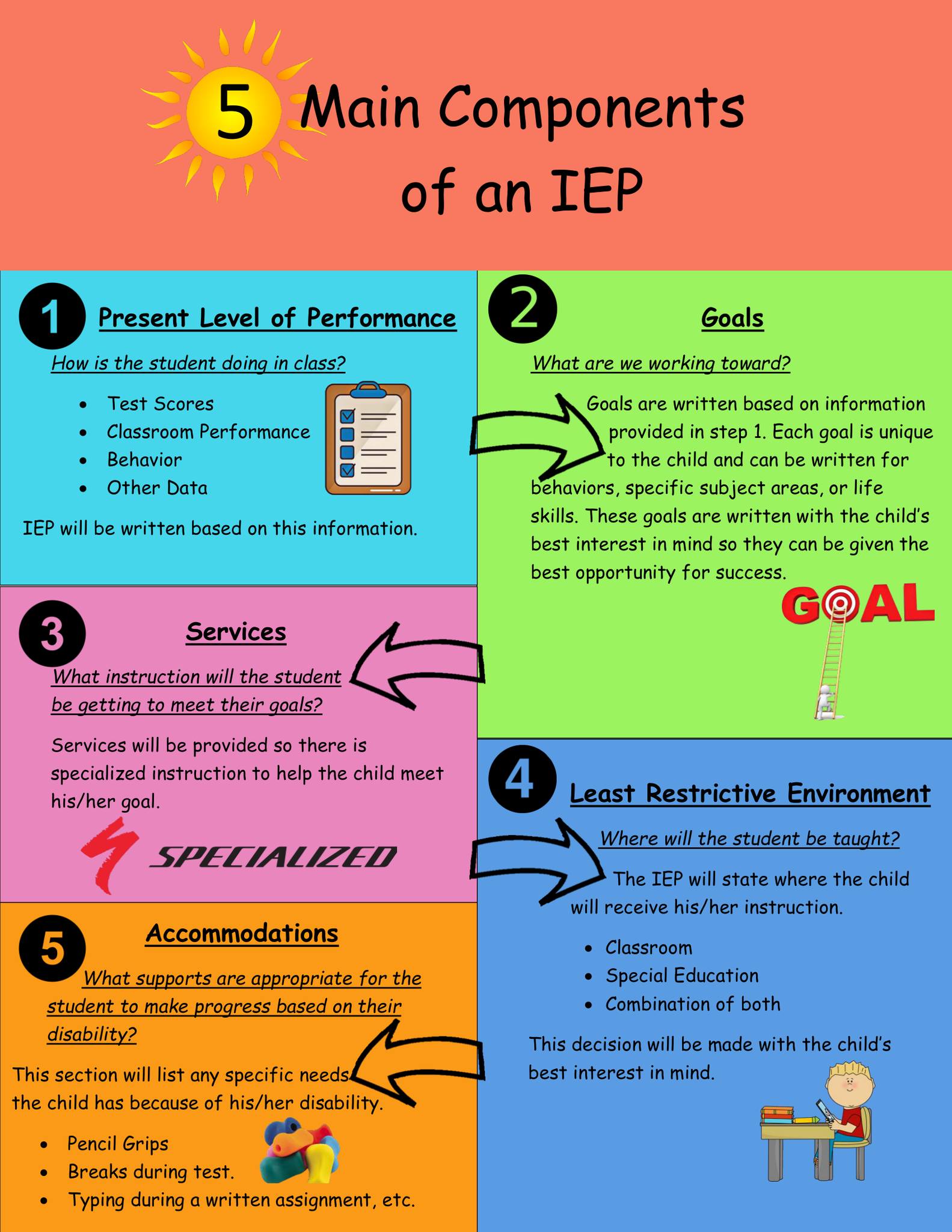
The the world of special education and Individualized Education Programs (IEPs) can be overwhelming for parents new to this journey. An IEP is a legal document designed to ensure that students with disabilities receive the necessary support to succeed academically and functionally. Let’s investigate the five main components of an IEP in detail, providing you with a comprehensive understanding of each element. Let’s explore these components, empowering you to become an informed and effective advocate for your child’s educational needs.
Present Levels of Performance:
The first component of an IEP is the “Present Levels of Performance” section. This part of the document provides a comprehensive overview of your child’s current academic and functional abilities. The IEP team, which includes educators, specialists, and parents, gathers and analyzes relevant data to identify your child’s strengths, weaknesses, and any challenges they may be facing. This information serves as the foundation for developing appropriate goals and designing an effective educational plan.
The “Present Levels of Performance” section may include:
- Academic assessments and test results
- Classroom observations and teacher evaluations
- Reports from therapists or specialists
- Input from the student and parents regarding their experiences and preferences
Goals:
In the “Goals” section, the IEP outlines the specific academic and functional objectives that your child will work towards during the school year. These goals are designed to be measurable, achievable, and tailored to your child’s unique needs. They serve as a roadmap to guide your child’s progress and provide a clear framework for tracking their development.
When setting goals, it’s essential to consider your child’s strengths and challenges, as well as their interests and aspirations. The IEP team collaborates to create objectives that promote growth and build on your child’s existing abilities.
Services:
The “Services” section details the special education and related services that your child will receive as part of their IEP. These services are based on the identified needs and goals, ensuring that your child receives the appropriate support to make progress in their academic and functional areas.
Examples of services that may be included in the IEP are:
- Speech therapy to improve communication skills
- Occupational therapy to address fine motor difficulties
- Physical therapy to enhance gross motor skills
- Counseling to support social and emotional development
- Resource room support for additional academic assistance
Least Restrictive Environment (LRE):
The “Least Restrictive Environment” (LRE) component emphasizes the importance of providing your child with an educational setting that encourages their participation in the general education curriculum to the maximum extent possible. The goal is to integrate your child with their non-disabled peers whenever appropriate, fostering inclusion and social growth.
The IEP team carefully considers the LRE while determining the appropriate placement for your child. This decision takes into account their academic abilities, support needs, and the potential benefits of interaction with typical peers.
Accommodations:
Accommodations are crucial to ensuring that your child can access the curriculum and participate in school activities effectively. The “Accommodations” section of the IEP outlines the specific adjustments and supports that will be provided to cater to your child’s individual learning style and needs.
Examples of accommodations include:
- Extended time for assignments and tests
- Preferential seating to aid focus and attention
- Use of assistive technology, such as text-to-speech software
- Breaks during tasks to avoid sensory overload
Familiarizing yourself with these components and actively participating in the IEP process, allows you to become a powerful advocate for your child, ensuring they receive the personalized education they deserve. If you have any questions or need further guidance, feel free to ask in the comments, and together, we can work towards creating a thriving educational experience for your child.
